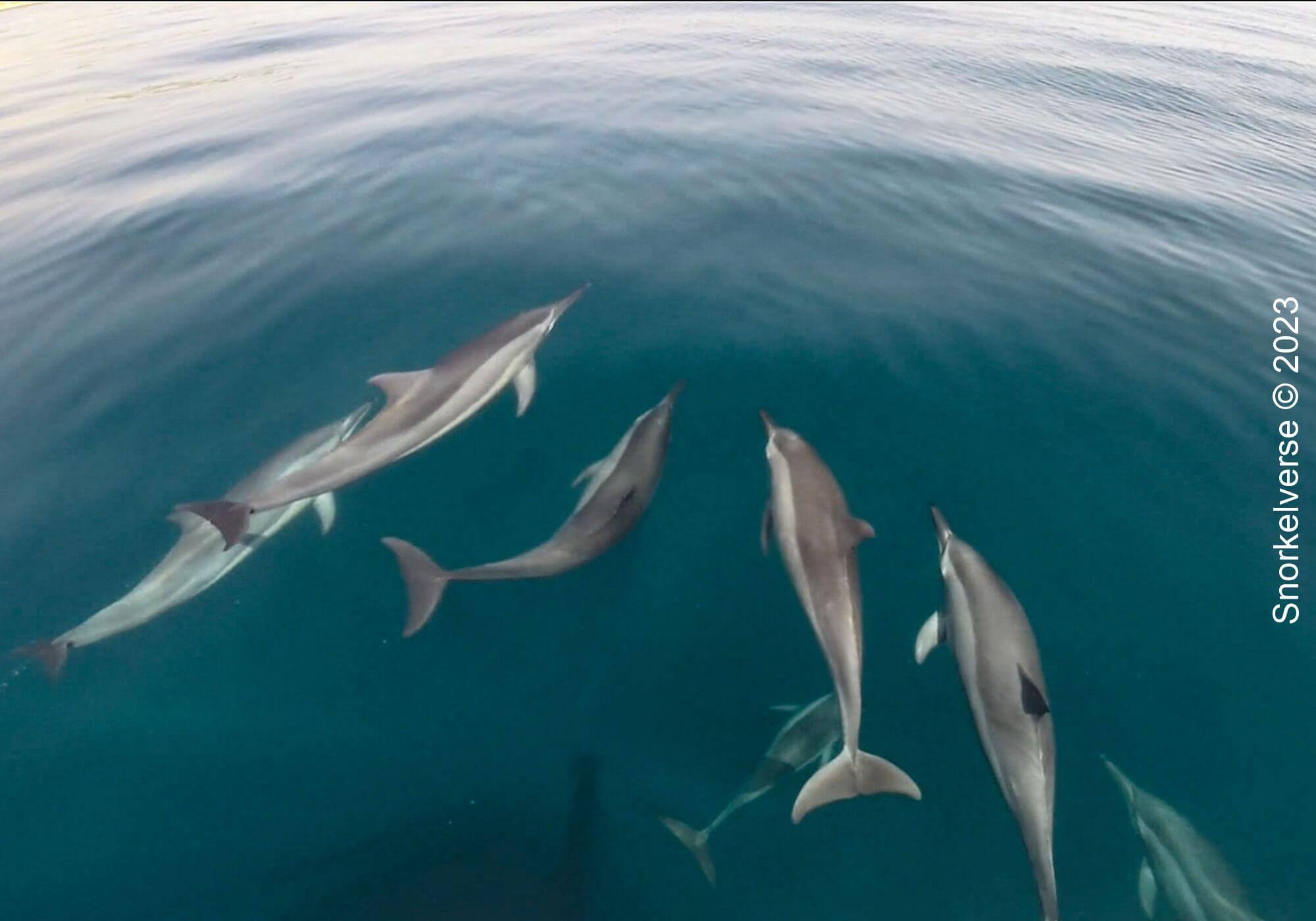

Description
Spinner Dolphin are named after their acrobatic ability to jump out of the water and spinning in the air. These dolphins are found in tropical and sub-tropical waters around the world. Spinner Dolphins are social mammals that travel in pods, that can range from a few individuals, all the way up to several hundred. They are known for their playful, interactive nature, often swimming along the side of boats, as shown in our Snorkelverse Experience below! They have a streamlined body adapted for speed, they have a darker grey upper-side and lighter grey under-side and a distinctive, recognazable dorsal fin. As seen on the top of the surface, there are usually more swimming under water.

Snorkeling Video

Habitat
The dolphins inhabit the Indian Ocean, Pacific Ocean, and Atlantic Ocean. They tend to swim in large pods in coastal waters, ranging from a few individuals, up to a several hundred.

Diet
Their diet consists of small fish, shrimp, and squid. They have multiple foraging techniques, including working in teams to collate schools of prey.

Appearance
The dolphins can grow up to approximately 2 meters in length. They have a grey, sleek body, optimised for fast swimming. They are identifiable from other dolphins due to their smaller body size and playful spinning. They are also seen in large pods.

Key Features
- Most recognisable for its jumping and spinning vertically out of the water.
- Darker grey upper body and lighter underside.
- Swim in sizable pods.
- Distinctive dorsal fin, seen when swimming over the water.
- Smaller size that other dolphins. (1.5-2m)

Threats
IUCN Conservation Status: Least Concerned
Tuna Fishing
One of the threats is by-catch or entanglement in Tuna fishing gear. Tuna’s tend to follow Spinner’s, seeking out the same food source, leaving Dolphins vulnerable to Tuna fishing nets.
Climate Change
Climate change is impacting the oceans, and reducing Dolphin prey’s habitat and opportunity for feeding.
Vessel Strike & Noise
Boat strikes and propellors can harm the dolphins, noise pollution can disrupt communication and navigation, confusing the dolphins.
Loss Of Habitat
Loss of habitat for other species can have a knock-on effect to the dolphins food source.

Frequently Asked Questions
Their diet consists of small fish, shrimp, and squid. They have multiple foraging techniques, including working in teams to collate schools of prey.
Adult Males generally reach approximately 1.5m-1.8m in length, while females are generally smaller, measuring 1.2m-1.5m.
Spinner Dolphins are generally considered to not be dangerous to humans. Although they can become defensive if threatened and have been known to bite. These dolphins can also carry diseases that are transmittable to humans.









